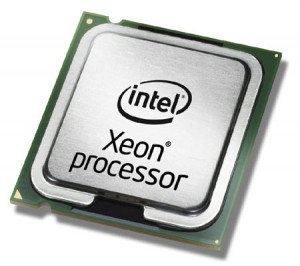 Dell and IBM yesterday announced servers with Intel’s latest Xeon server chips, which will bring faster throughput and memory allowing servers to take on more complex workloads while reducing data centre costs.
Dell and IBM yesterday announced servers with Intel’s latest Xeon server chips, which will bring faster throughput and memory allowing servers to take on more complex workloads while reducing data centre costs.
The new servers are being announced concurrently with Intel’s announcement of new Xeon server chips designed for customers looking to lower power costs while adding processing muscle to handle more web, database and analytics transactions.
Besides being faster and more power efficient, the new Xeon chips include support for technologies that enable faster data pathways for servers to take on high-performance computing workloads, both IBM and Dell said. The servers are denser and also carry more memory slots than predecessors, which allow for better database performance via more in-memory workloads.
The servers also pack new networking and bus technologies that improve bandwidth for faster deployment of more virtual machines. The adoption of the new PCI-Express 3.0 bus and 10-gigabit Ethernet at the motherboard level improves throughput for servers to loop data more quickly.
The new Xeon E5-4600 chips for four-socket servers and E5-2400 chips for two-socket servers are based on Intel’s Sandy Bridge microarchitecture, while the Xeon E3-1200 V2 chips are based on the new Ivy Bridge architecture and targeted at microservers, which are low-power servers for Web and cloud applications.
Dell’s new PowerEdge M820 blade comes with E5-4600 chips and offers 50 percent more memory slots and up to 1.5TB of memory, the company said. The lower-end M420 blade server offers up to 25 percent better performance on mainstream applications such as mid-tier collaboration, database and virtualisation environments compared to its predecessor server.
Power consumption among the new Dell servers remains consistent compared to the previous generation, but customers will get better performance per watt of power consumed, Dell said. For example, the new PowerEdge R820 rack server with an E5-4600 chip is 43 percent faster compared to the previous generation PowerEdge R710 using comparable previous-generation Intel processors. That is important for customers concerned about reducing power consumption and related costs, Dell said.
Dell’s new R820 rack server supports up to 32 virtual machines in the same 2U rack space compared to the older PowerEdge R710, which supports up to six virtual machines, Dell said. The new server provides around 200 percent more performance on Java- or middleware-related tasks.
Dell’s PowerEdge T420 and T320 tower servers are more compact than predecessors, but have more memory and storage, Dell said. The T420 can support 33 more processor cores, 50 percent more memory slots and 166 percent more internal storage capacity, which helps process larger data sets. The T420 two-socket server comes with E5-2400 processors and supports up to 192GB of memory.
Many of the new PowerEdge servers will become available on Monday, though Dell declined to immediately provide pricing. The M820 blade will be available in summer, and Dell declined to provide a specific date.
IBM announced the four-socket System x3750 rack server, which has the E5-4600 processors and is designed to handle intensive database and analytics workloads.
The new IBM BladeCenter HS23E entry-level blade server based on the new Intel chips can be deployed in a matter of minutes, IBM said. Other new server offerings include the FlexSystem x220, an entry-level server for virtualisation, email and collaboration. The FlexSystem plugs into the company’s larger offering of PureSystem preconfigured servers, which was unveiled last month.
The BladeCenter HS23E and the System x3750 become available on June 4 and July 12 respectively, IBM said. Pricing for the servers was not immediately available .





